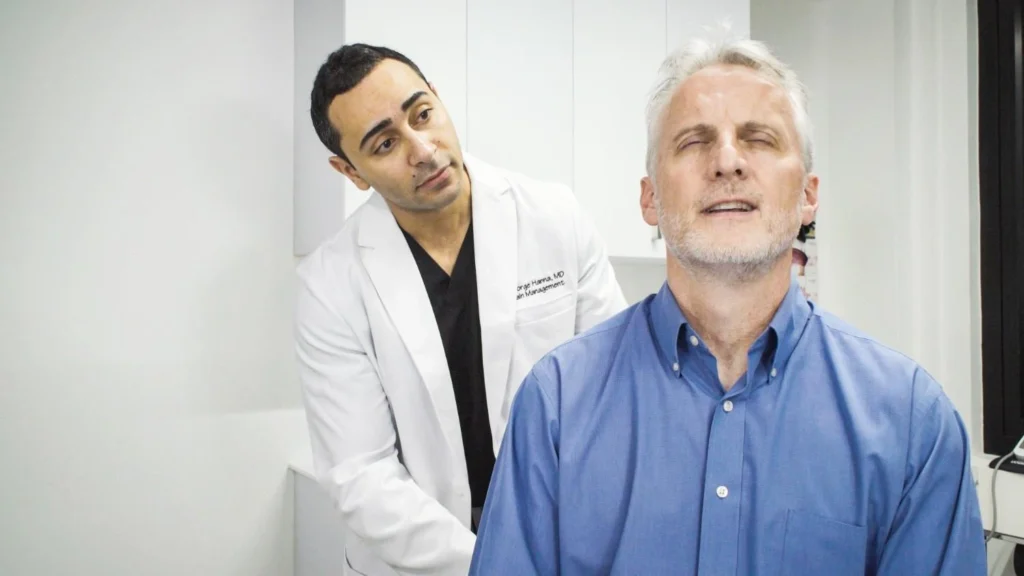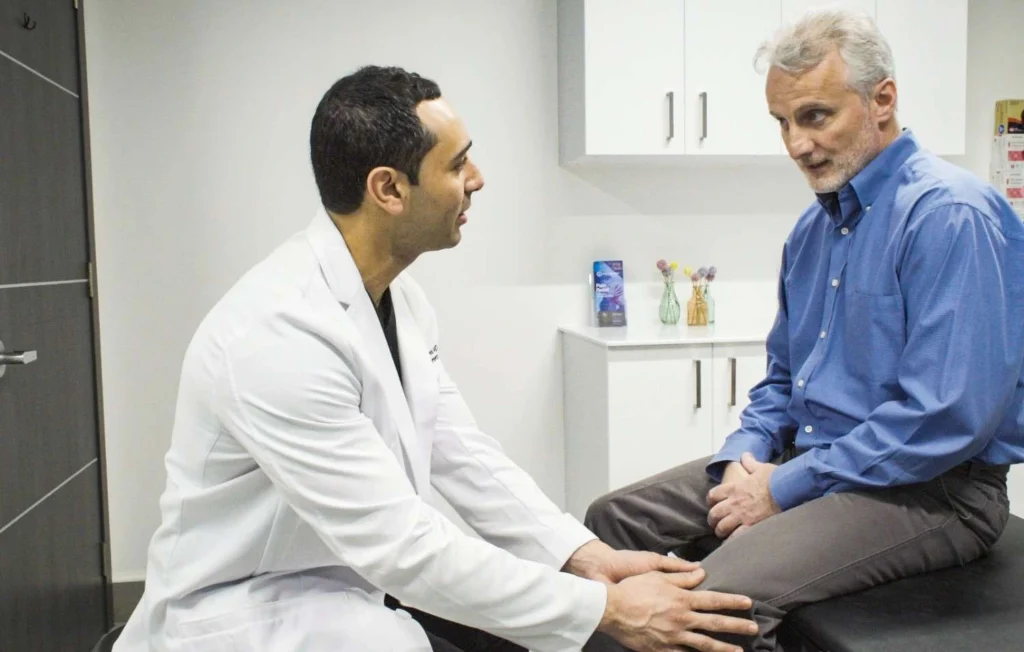5 Vein Treatments We Provide at Our Vein Treatment Clinics
You’ve been avoiding shorts or skirts because of unsightly veins on your legs. Perhaps you’ve noticed swelling, heaviness, or discomfort that worsens after a long day. These symptoms may signal more than just a cosmetic issue—they could indicate underlying vein disease, such as chronic venous insufficiency, a common cause of varicose veins. Left untreated, this condition can lead to further complications, affecting your quality of life and mobility.
At VIP Medical Group, our vein treatment clinics specialize in addressing spider veins and varicose veins with advanced, minimally invasive treatments. Our patient-centered approach focuses on diagnosing the root cause of your symptoms and tailoring treatments to your needs. This article introduces you to five minimally invasive vein treatments we offer—each aiming to restore vein health, relieve discomfort, and enhance the appearance of your legs.
1. Sclerotherapy
Sclerotherapy is a highly effective treatment for spider veins and small varicose veins. During this procedure, your vein specialist injects a medical solution called a sclerosant directly into the affected veins. The solution irritates the vein walls, causing them to collapse and seal shut. Over time, the body naturally reabsorbs the treated veins, eliminating their appearance and improving circulation in surrounding veins.
This procedure is quick, virtually painless, and performed in the office. Depending on the extent of your spider veins, multiple sessions may be needed to achieve optimal results. Sclerotherapy cost varies based on the treatment plan, but it remains one of the most affordable and efficient options for spider veins. If your spider veins stem from venous insufficiency, sclerotherapy may be performed after diagnosing and treating the underlying vein disease.
Benefits of Sclerotherapy:
- Minimal downtime and fast recovery
- Quick procedure, usually lasting 30 minutes
- Effective for spider veins and small varicose veins
- Enhances leg appearance and circulation
2. Radiofrequency Ablation
Radiofrequency ablation (RFA) is a state-of-the-art procedure that aims to treat the underlying causes of varicose veins, such as venous insufficiency. Using heat generated by radiofrequency energy, your vein doctor treats the diseased vein from within. A thin catheter is inserted into the vein, and heat is applied to the vein walls, causing the vein to close. Blood naturally reroutes to healthier veins, relieving symptoms like pain, swelling, and heaviness.
This minimally invasive procedure is performed under local anesthesia, with no stitches or significant downtime required. As one of the best treatments for varicose veins, RFA is often covered by insurance when deemed medically necessary.
Benefits of Radiofrequency Ablation:
- Minimally invasive with no scarring
- Treats the root cause of varicose veins
- Provides immediate symptom relief
- Covered by insurance for venous insufficiency
3. Endovenous Laser Ablation
Endovenous laser ablation (EVLA) is another cutting-edge technique for varicose veins and their underlying causes. This vein ablation procedure uses laser energy to close damaged veins. Your vein specialist inserts a thin laser fiber into the vein, delivering controlled energy to seal it. The treated vein gradually fades as your body reroutes blood flow to healthier veins.
Like RFA, EVLA is performed under local anesthesia, ensuring a comfortable experience with minimal recovery time. Patients often experience a noticeable improvement in symptoms, such as leg pain and swelling, within a few days. If you’re searching for the best treatment for varicose veins, this highly effective option could be right for you.
Benefits of Endovenous Laser Ablation:
- Minimally invasive and virtually painless
- Treats large varicose veins and underlying venous insufficiency
- Improves both symptoms and leg appearance
- Covered by most insurance plans
4. VenaSeal
VenaSeal uses a medical adhesive to close diseased veins. During the procedure, your vein specialist injects the adhesive into the affected vein using a catheter. The adhesive seals the vein shut, rerouting blood to healthier veins and alleviating symptoms of venous insufficiency. Unlike other vein treatments, VenaSeal does not require heat or tumescent anesthesia, making it an excellent option for patients seeking a more comfortable procedure.
This minimally invasive treatment is performed in-office and has an exceptionally high success rate. Recovery is quick, with many patients returning to their daily activities immediately. Additionally, unlike most other vein treatments, VenaSeal doesn’t require you to wear compression stockings after treatment, which is preferable to some individuals.
Benefits of VenaSeal:
- No need for heat or multiple injections
- Quick and virtually painless procedure
- Immediate symptom relief with minimal downtime
- High success rate for treating venous insufficiency
- No need to wear compression stockings after vein treatment
5. Compression Therapy
Compression therapy involves wearing specially designed compression stockings to manage symptoms of vein disease. These stockings apply graduated pressure to your legs, improving blood flow and reducing swelling. While compression therapy does not treat the root cause of vein disease, it is often used alongside other treatments to support recovery, alleviate some of the symptoms of venous insufficiency, and prevent further complications.
Compression stockings are particularly beneficial for individuals with mild venous insufficiency or not yet candidates for procedures like vein ablation. They are also helpful during the recovery period after vein treatments. Many insurance plans cover compression stockings when prescribed by a vein doctor.
Benefits of Compression Therapy:
- Reduces swelling and discomfort
- Improves circulation in the legs
- Non-invasive and cost-effective
- Supports recovery after vein procedures
Insurance Coverage for Vein Treatments
At VIP Medical Group, we understand that cost can be a concern when seeking medical care. Most vein treatments, including RFA, EVLA, and VenaSeal, are covered by medical insurance if deemed medically necessary. Spider vein treatments, such as sclerotherapy, may also be covered if you are diagnosed with venous insufficiency, as these often stem from underlying vein disease, and sclerotherapy can be included as a part of a larger vein treatment plan.
Our vein treatment clinics offer free insurance verification before your first appointment, helping you understand your coverage and benefits. With locations across New York, Long Island, California, Maryland, and New Jersey, VIP Medical Group is committed to delivering world-class vein care tailored to your needs. If you’re considering a vein procedure, contact us to request free insurance verification or visit your nearest vein treatment clinic.





